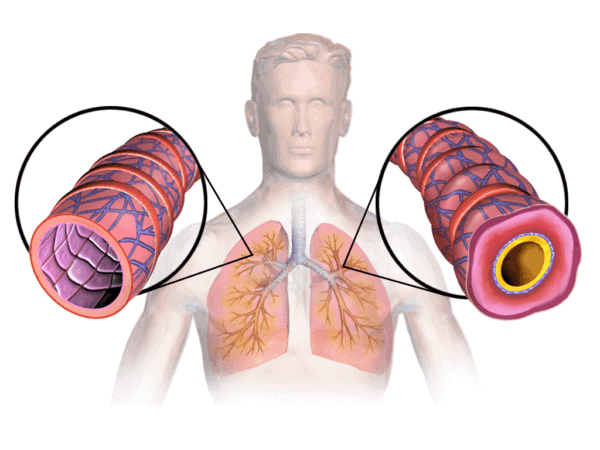
 Researchers at the Université Laval in Quebec have created a smart t-shirt for measuring breathing rates in real time.
Researchers at the Université Laval in Quebec have created a smart t-shirt for measuring breathing rates in real time.
It’s a technology which could be used to diagnose respiratory illnesses and monitor people with conditions such as asthma, sleep apnea and chronic obstructive pulmonary disease.
While the emergence of wearable technologies like smart watches and fitness trackers has been a boon for the gadget-obsessed, it is also making a difference in health care. Data from sensors worn by patients at home can be monitored at a distance by physicians, for example, allowing for more timely and accurate transmission of information.
Studies show that routine monitoring of vital signs like blood pressure, heart rate and body temperature can help identify medical problems.
But for respiratory monitoring, the available technologies are limited.
Pneumographic approaches exist which use electrodes attached to the body to track chest movement, as well as electrocardiogram procedures for measuring the heart’s electrical activity, again through the use of electrodes.
Another option not involving wires takes advantage of radio frequency pulses to detect movement (and thus breathing) but this approach not only requires a tonne of equipment to operate but necessitates that the patient’s movements be restricted (basically, they need to be non-moving and lying down in bed).
The new invention from researchers at the Université Laval’s Faculty of Science and Engineering and its Center for Optics, Photonics, and Lasers attempts to make breath monitoring a lot less complicated.
It uses no electrodes, making it much more comfortable and accessible option for pulmonary monitoring, says Younes Messaddeq, physics professor at Laval and team lead on the project. Plus, it’s washable.
“The T shirt is really comfortable and doesn’t inhibit the subject’s natural movements,” says Messaddeq, in a press release. “Our tests show that the data captured by the shirt is reliable, whether the user is lying down, sitting, standing, or moving around.”
The technology uses a spiral-shaped antenna sewn into a cotton t-shirt at chest level, with the antenna composed of an optical fibre coated on the inside with a thin layer of silver, giving the fibre an electrical resistance.
Respiration uses the diaphragm and the external intercostal muscles to expand the chest during inhalation. The contraction of intercostal muscles causes the ribs to rise, allowing for greater volume of air to enter the lungs. Typically, this expansion is measured on average at 7.37 cm for men aged 25-34 taking deep breaths.
The spiral antenna senses both physical chest expansion and changes in the volume of air in the lungs. “These changes modify some of the resonant frequency of the antenna. That’s why the T shirt doesn’t need to be tight or in direct contact with the wearer’s skin,” says Messaddeq.
The researchers see their product as having applications in multiple health care scenarios. So far, their testing has been performed with two male volunteers trying on the t-shirt in various sitting, standing and lying down positions, but the researchers say they next aim to adapt the technology for newborn infants.
The new research is published in the journal Sensors.
Leave a Reply
You must be logged in to post a comment.




 Share
Share Tweet
Tweet Share
Share




Comment